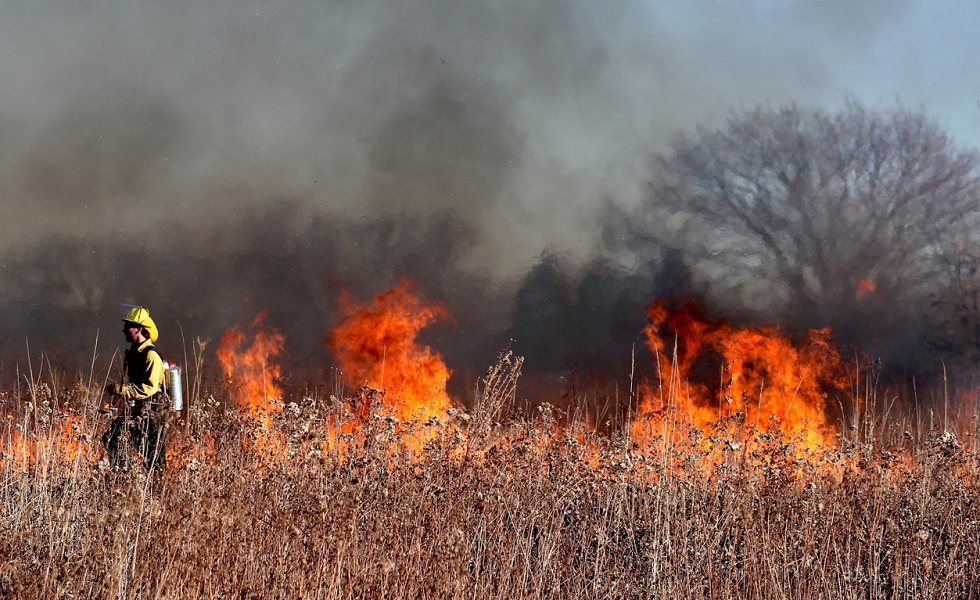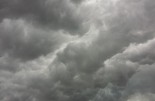Columbia Threadneedle: Reassessing the risks of wildfires
October 19, 2021
Climate Change
Risk Management

By Natalia Luna, Senior Thematic Investment Analyst, Responsible Investment, and Kyle Bergacker, Senior Responsible Investment Analyst, both working at Columbia Threadneedle Investments
The 2020 wildfire season in the US was among the worst on record. In California, a record-setting four million acres burned, doubling the prior record set in 20181. Amid the pandemic shutdown, North America was the only region in the world to see pollution levels rise, and that was due almost solely to the smoke created by these fires.
While wildfires have always been a part of the western US environmental cycle, hotter and drier conditions for longer periods – interspersed with unusually wet conditions – are resulting in more frequent and severe wildfires. The 2021 fire season is already on track to outdo last year’s devastation as the west and north-west US grapple with a record-setting drought and record-breaking heat. So far this year more than 40,000 wildfires in 13 states have already consumed 4.8 million acres2.
In some ways, the risks of wildfire are clear: loss of life, damage to property and loss of wildlife’s natural habitats. For individuals, of course, fire can cause a catastrophic personal loss, and more Americans than ever are now exposed to this risk. According to Verisk’s 2019 Wildfire Risk Analysis3, 4.5 million US homes were identified as being at high or extreme risk of wildfire, with more than two million in California alone. Another way to consider the impact of wildfires is through the lens of GDP. The direct cost of fire is significant, but at the GDP level these events tend to balance out: property is destroyed (a hit to GDP) but then rebuilt (a boon).
In between individual hardship and broader economic impacts, myriad other costs are typically not counted, or accounted for, by investors. Accurately factoring economic risks posed by wildfires will increasingly require a methodology for assessing the prospective loss of physical assets above and beyond acreage, and the impact to longer-term sustainability, health and society.
A factor for any business
The scope of physical risk to businesses from wildfires is vast and potentially extremely costly. A 2018 Center for Disaster Philanthropy report found that, unless action is taken, 215 of the world’s 500 largest companies risk losing an estimated one trillion dollars within five years from the impacts of climate events including fires4. With the severity and frequency of extreme weather events rising, more organisations will be affected – a financially material issue that may change the risk profile of many organisations.
“As investors, we need to be able to understand which companies are at risk and reflect these risks in our investment and allocation models,” says our colleague Roger Wilkinson, Head of EMEA Equity and Responsible Investment Research. “It is not enough to look at the direct impacts. We have to look at how the effects of wildfires and other environmental disasters go up and down the supply chain.”
It goes beyond the obvious candidates. Most people would think companies such as utilities or insurers are bearing most of the costs, but that is not necessarily the case. We must look at every company to understand how they are specifically exposed to physical risk from fire and their mitigation and adaptation plans. For some organisations, the damage to assets will be direct (eg in grid infrastructure), but for almost all there will be some indirect impact from supply chain disruption, changes in availability of resources, sourcing, transport needs and employee safety to name just a few.
Taking a more sophisticated view
For something such as fire risk, we can build analytical models with our data science team. There are data sources that allow us to look across 5,000 companies to understand their wildfire risk. Physical facility locations have unique risks and building types, and mitigation efforts can make a difference. Some buildings, for example, may be in a wildfire zone where wildfires happen every week, but the impact to those buildings is low or non-existent – that would be a low exposure to overall wildfire risk. Likewise, if you have a building location that has wildfires often and it burns the building down, there is a very high exposure to that risk. When we factor in these levels of exposures it reveals a much broader sector and industry impact for wildfires than you might expect.
Proximity to fire alone does not determine risk. In a paper published in Nature Sustainability, the authors observed that: “While the deadliest wildfires (in 2018) destroyed many houses and other physical infrastructure, the air pollution triggered caused a great burden to people’s health. Productivities were therefore reduced due to sickness in California. The slowdown in production caused ripple effects to economic supply chains within California as well as the other 49 states and abroad.”
Wildfires are not only a US phenomenon. Australia and even Siberia are experiencing record temperatures and wildfires as well, and the unprecedented heatwave and wildfires in Greece during the summer may be a harbinger of what Southern and Central Europe may experience as the effects of climate change settle in. The risks to businesses and markets from wildfires are clearly becoming a global problem, which further complicates how one measures the impacts. More than ever, you need a comprehensive view of the risks and a way to apply it to your assessments for both industry and individual companies.
A growing number of companies are acknowledging the reality of persistent wildfire threats and have begun to evaluate and report on their risk exposure and mitigation plans. Several dozen companies in the S&P 500 – including real estate, hospitality and food and beverage concerns – now include wildfire risk disclosures in their 10k filings. This is up from single digits a decade ago, and that number will likely continue to grow as more investors demand greater transparency on ESG risk factors5.
The bottom line for investors
Increasing risks to business and the economy from wildfires and other climate change-driven environmental impacts such as flooding, excessive heat and violent storms are not going away – and will most likely get worse. Investors need to leverage the right research and analytical tools to determine the effects on their investments and allocations. Our responsible investment team is continually evaluating the risks of environmental factors such as wildfires in the companies we invest in – analyses that are baked into our fundamental investment process.
Share this post!











